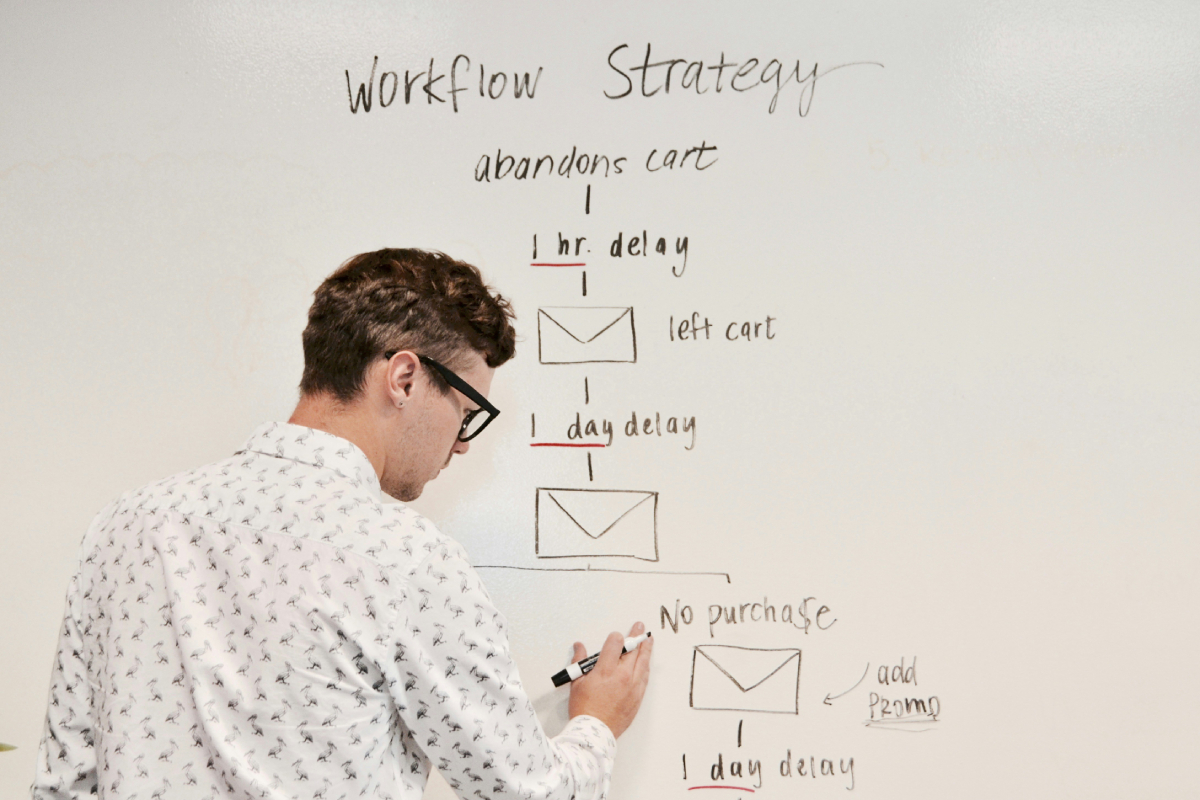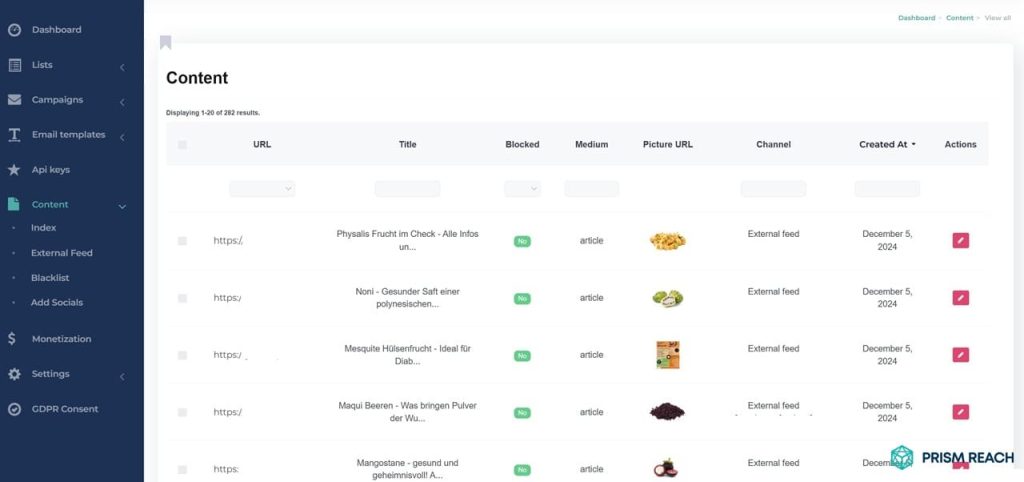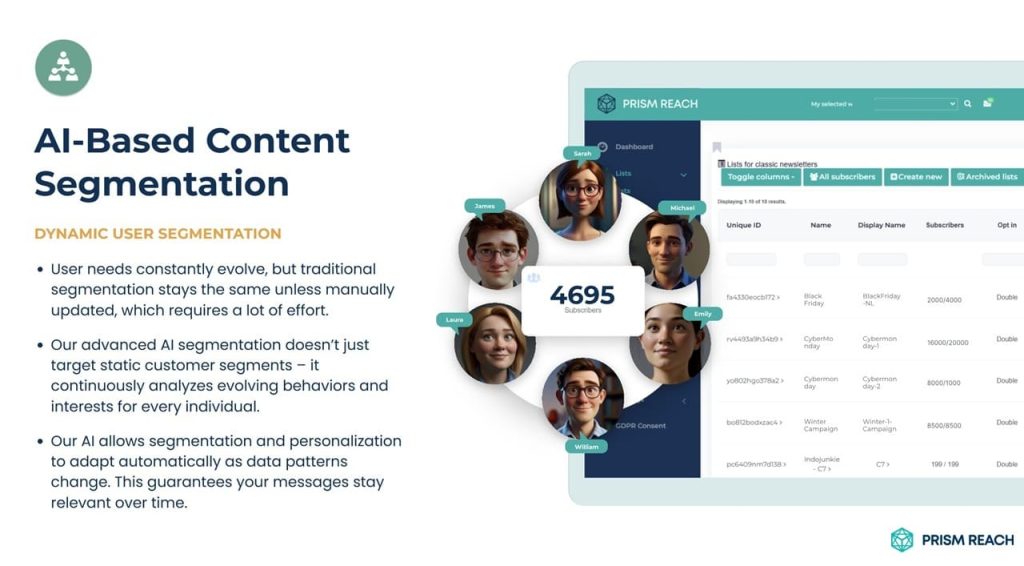In today’s digital landscape, email marketing remains a cornerstone of successful business communication strategies. As we navigate an increasingly crowded online space, the ability to plan and execute effective email campaigns has become more crucial than ever. This article delves into the intricacies of crafting email marketing campaigns that not only reach your audience but resonate with them, driving engagement and conversions.
The importance of email marketing cannot be overstated, especially in light of recent industry trends. With the rise of personalization and AI-driven marketing tools, businesses are finding new ways to cut through the noise and deliver messages that truly matter to their subscribers. As we explore the planning process, we’ll uncover how these innovations are shaping the future of email marketing.
Key Facts
- Planning an effective email marketing campaign involves setting clear goals, understanding your audience, and creating personalized content that resonates with subscribers.
- According to a recent study, personalized email campaigns can increase revenue by up to 760% compared to generic campaigns.
- Effective email marketing campaigns have been shown to generate an average ROI of $42 for every $1 spent, making it one of the most cost-effective marketing channels available.

The Blueprint for Email Marketing Success
At the heart of any successful email marketing campaign lies a well-thought-out plan. “The key to effective email marketing is not just about sending emails, but about sending the right emails to the right people at the right time,” says Sarah Johnson, a veteran email marketing strategist. This sentiment encapsulates the essence of modern email campaign planning.
Implementing innovative strategies can significantly enhance the effectiveness of your campaigns. Here are five lesser-known but highly effective strategies that focus on enhancing organization, personalization, and overall campaign performance:
1. Create a Detailed Campaign Roadmap
Develop a comprehensive roadmap that outlines each campaign’s objectives, target audience, content themes, timelines, and responsibilities. This structured approach ensures all team members are aligned and helps identify potential overlaps or gaps in your strategy.
- Benefits:
- Ensures all team members are on the same page.
- Helps identify and eliminate overlaps or gaps in your strategy.
- Provides a clear timeline and set of responsibilities, enhancing accountability.
- Implementation Tips:
- Outline clear objectives for each campaign phase.
- Define target audience segments and tailor strategies accordingly.
- Assign specific roles and responsibilities to team members to ensure smooth execution.
2. Utilize Behavioral Segmentation
Go beyond basic demographic segmentation by analyzing user behavior, such as past purchases or website interactions. This allows for more targeted messaging that resonates with specific segments, increasing engagement and conversion rates.
- Benefits:
- Delivers more relevant and personalized content to subscribers.
- Enhances engagement by addressing specific interests and behaviors.
- Increases conversion rates through targeted and timely messaging.
- Implementation Tips:
- Analyze subscriber data to identify behavioral patterns.
- Create segments based on actions like purchases, clicks, and website visits.
- Tailor email content to address the unique needs and interests of each segment.
3. Incorporate Multi-Channel Touchpoints
Integrate your email campaigns with other marketing channels (like social media or SMS) for a cohesive approach. This multi-channel strategy amplifies your message and provides multiple touchpoints to engage with your audience.
- Benefits:
- Enhances the reach and visibility of your campaigns.
- Provides multiple avenues for engagement, catering to different preferences.
- Creates a unified brand presence across various platforms.
- Implementation Tips:
- Coordinate messaging across email, social media, and SMS to ensure consistency.
- Use each channel to complement and reinforce the others.
- Track engagement across all channels to gain a holistic view of campaign performance.
4. Leverage Trigger-Based Campaigns
Set up automated trigger-based emails that respond to specific actions taken by subscribers (e.g., signing up, clicking a link). These timely communications keep your brand top-of-mind and encourage further engagement.
- Benefits:
- Delivers timely and relevant content based on subscriber actions.
- Enhances user experience by providing personalized interactions.
- Increases the likelihood of conversions through timely prompts.
- Implementation Tips:
- Identify key subscriber actions that can trigger automated emails.
- Design personalized email content that responds to each specific action.
- Test and refine triggers to ensure they are effective in driving engagement.
5. Conduct Competitor Analysis
Regularly analyze competitors’ email campaigns to identify what works well in your industry. Understanding their strategies can inspire new ideas and help you differentiate your messaging.
- Benefits:
- Gains insights into effective strategies and tactics used by competitors.
- Identifies gaps and opportunities in your own email marketing approach.
- Helps in differentiating your campaigns to stand out in the market.
- Implementation Tips:
- Subscribe to competitors’ email lists to monitor their campaigns.
- Analyze aspects like subject lines, content, design, and call-to-actions.
- Adapt successful strategies while ensuring your messaging remains unique and aligned with your brand.

Hidden Gem Strategies
In addition to the foundational strategies, incorporating these five hidden gem strategies can further enhance your email marketing planning efforts, making them more organized, effective, and aligned with your overall marketing goals:
1. Implement A/B Testing for All Elements
While many marketers A/B test subject lines, consider testing other elements like CTAs, images, or even email layouts. This comprehensive testing can uncover insights that lead to higher engagement rates across the board.
- Benefits:
- Identifies the most effective elements that drive engagement.
- Enhances overall email performance by optimizing multiple components.
- Provides a data-driven approach to refining email content and design.
- Implementation Tips:
- Develop hypotheses for different elements to test.
- Run tests sequentially or simultaneously, ensuring statistical significance.
- Analyze results and implement the best-performing variations in future campaigns.
2. Use Dynamic Content Personalization
Incorporate dynamic content that changes based on user preferences or behaviors within the same email. For example, showing different product recommendations based on past purchases can enhance relevance and drive clicks.
- Benefits:
- Delivers highly relevant content tailored to individual subscribers.
- Enhances user experience by providing personalized interactions.
- Increases click-through rates by showcasing items of genuine interest.
- Implementation Tips:
- Segment your audience based on behavior and preferences.
- Design emails with dynamic content blocks that can be personalized for each segment.
- Regularly update dynamic content based on ongoing subscriber interactions and feedback.
3. Optimize for Mobile First
Given that over 50% of emails are opened on mobile devices, prioritize mobile optimization in your design process. Ensure that emails are visually appealing and easy to navigate on smaller screens.
- Benefits:
- Ensures a seamless user experience across all devices.
- Increases the likelihood of emails being read and interacted with on mobile.
- Enhances overall engagement by catering to the prevalent mobile user base.
- Implementation Tips:
- Use responsive design techniques to adapt emails to different screen sizes.
- Optimize images for quick loading on mobile networks.
- Create easily tappable call-to-action buttons and ensure all interactive elements are mobile-friendly.

Innovative Solutions by Prism Reach
While implementing these strategies can significantly improve your email marketing efforts, leveraging advanced technology can take your campaigns to the next level. This is where Prism Reach comes into play. Our AI-powered SaaS solution is designed to revolutionize your email marketing efforts by automating and optimizing many of these engagement and conversion-boosting strategies.
Key Benefits of Prism Reach:
- Enhanced Personalization: Prism Reach leverages AI to create detailed user avatars, allowing for highly personalized content that aligns with each subscriber’s unique preferences and behaviors.
- Optimized Scheduling: The platform uses predictive analytics to determine the best times to send emails to each individual subscriber, maximizing the chances of your emails being opened and engaged with.
- Advanced A/B Testing: Prism Reach simplifies the A/B testing process, enabling marketers to test unconventional elements efficiently and implement the most effective variations across their campaigns.
Upgrade Your Email Marketing with AI Personalization!
Utilize Prism Reach’s AI-Powered Personalization
Prism Reach’s AI-driven personalization capabilities enable you to deliver highly relevant content based on subscriber behavior and preferences. By analyzing first-party data, Prism Reach ensures that each email is tailored to the individual, enhancing the user experience while maintaining privacy compliance.
Implement Adaptive Testing with Prism Reach
Prism Reach’s adaptive testing feature allows you to test multiple variations of your email content simultaneously. Unlike traditional A/B testing, adaptive testing automatically adjusts traffic distribution based on performance, identifying the best-performing content more efficiently. This ensures that your emails are always optimized for maximum engagement and conversion.
Leverage Prism Reach’s Data Security Features
With Prism Reach, data security is paramount. The platform includes advanced security measures such as encryption and regular security audits, ensuring that subscriber data is protected against breaches and unauthorized access. This commitment to data security builds trust with your audience and aligns with compliance requirements.
Conclusion
Planning an effective email marketing campaign is a multifaceted process that requires a strategic approach, deep understanding of your audience, and the right tools to execute your vision. By setting clear goals, creating personalized content, and leveraging advanced technologies like AI-driven personalization, businesses can craft email campaigns that not only reach their audience but truly resonate with them.
Incorporating hidden gem strategies such as creating a detailed campaign roadmap, utilizing behavioral segmentation, incorporating multi-channel touchpoints, leveraging trigger-based campaigns, and conducting competitor analysis can significantly enhance the effectiveness of your email marketing efforts. These approaches ensure that your campaigns are well-organized, highly targeted, and capable of driving meaningful engagement.
Additionally, employing hidden gem strategies like implementing A/B testing for all elements, using dynamic content personalization, optimizing for mobile first, incorporating user-generated content, and regularly updating your email list further refines your approach, ensuring sustained engagement and improved campaign performance.
Leveraging advanced tools like Prism Reach can significantly amplify these planning strategies. With features such as enhanced personalization, optimized scheduling, and advanced A/B testing, Prism Reach empowers marketers to optimize their email campaigns with unparalleled precision and efficiency.
Ultimately, the key to successful email marketing lies not just in the tools chosen but in how effectively they are leveraged to create meaningful connections with your audience. Whether creating detailed campaign roadmaps, utilizing behavioral segmentation, or integrating multi-channel touchpoints, the focus should remain on delivering value and fostering engagement with your subscribers. With persistence, analysis, and the right tools, you can transform your email marketing into a powerful engine for growth and customer engagement.